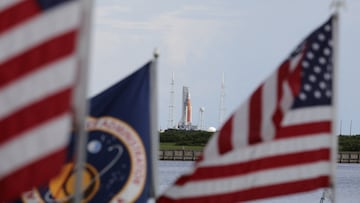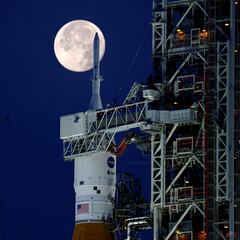Why is the US going back to the moon after 50 years?
NASA sees a return to the moon as the first step on the path to a manned mission to Mars and Artemis is the boots it will use for the journey.


While the latest stage of the Artemis rocket testing has been postponed, it won’t be long before the tests are complete and astronauts are back on the moon once more.
With a strained economic outlook for the US and the world, firing humans into space may be the least important thing on many Americans’ agenda. Each launch costs $4 billion. However, NASA has used a lot more private investment for its latest round of space explorations including the use of rockets from SpaceX and Blue Origin, controlled by Elon Musk and Jeff Bezos respectively.
The real aim for NASA is to do something so far unaccomplished by humans; reach Mars. the red planet has had a number of unmanned missions onto the surface in the form of rovers, but so far it has been impossible to translate that to a human footprint. Musk has made Mars a focus of SpaceX’s mission and the lessons from the Moon could help him realise this goal.
Liftoff! pic.twitter.com/LWRCAVnJtN
— SpaceX (@SpaceX) August 28, 2022
Craig Hardgrove, an associate professor in the School of Earth and Space Exploration at Arizona State University says that testing on the moon is crucial for translating that experience to the surface of Mars.
“The launch windows to get to Mars are once every two years,” he says. “So, we would be thinking about keeping our astronauts on the surface of Mars for a long period of time. I personally feel like we would be doing them a service and everyone a service if we test out all these technologies on the moon first.”
Related stories
It isn’t a sudden decision to put humans back on the moon. As far back as the Bush administration plans were drawn up for the task though a number of delays have happened which have hampered proceedings. It could be a happy accident that it coincides with 50 years for the launch this year, though it won’t be until 53 years after the last landing if the current timetable is followed.
In terms of geopolitics, the US government may be concerned that China has been dominating the lunar space in recent years. The US government has listed China as a threat to its military and economic hegemony on Earth and the Artemis programme could be the start of a new space race to the Moon and to Mars.
China is the first to land on the far side of the moon pic.twitter.com/zjlaJTGskL
— Tech Insider (@TechInsider) November 29, 2021

